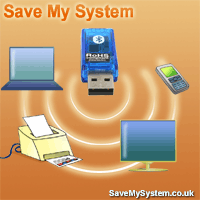The Soviets had threatened to dominate space well before the Eagle had landed. When the Soviet Space Program successfully sent Sputnik into orbit in'57, the so-called free world was in a panic. Congress reacted with swiftness reserved for a national crisis. Indeed, for many Americans, the perceived superiority of the Soviet program was tantamount to a crisis. President Eisenhower moved quickly to establish both NASA and DARPA (Defense Advanced Research Projects Agency) in'58.
Led by the former head of the German rocket program, Wernher von Braun, NASA immediately began to explore the possibility of sending human beings into space. The motto declared "For the Benefit of All," but NASA moved quickly for the American public when it launched the Explorer 1 satellite on January 31,'58. Dubbed Project Mercury, this program involved seven original astronauts, of whom, Alan Shepard became the first American into space, while John Glenn would become the first American to orbit the earth.
For decades the GPS system was classified and reserved only for military and governmental use. Then, in'83, a Soviet interceptor aircraft shot down the civilian Korean Air airliner KAL 007, killing all 269 people on board. The plane had strayed into Soviet airspace and although the Soviet had probable cause to destroy the perceived threat, it was determined had the airliner had accurate navigational systems, the tragedy could have been avoided. President Ronald Reagan subsequently announced that civilians and civilian agencies should have access to the GPS tracking systems.
Initially developed by the Navy, the first successful GPS tracking system was dubbed Transit, and used five satellites to triangulate positions around the globe. With the Space Race underway, NASA began implementing a new tracking system, called the Global Positioning System (GPS). The system involved the use of satellites to track the position and location of both spacecraft and intercontinental ballistic missiles.
GPS racking devices have become an integral part of modern 21st Century life. Not only has it become the preeminent navigational system for cars, but the scientific community has used it to track wild and domestic animals and migration patterns. Law enforcement uses GPS tracking to find stolen cars and keep tabs on criminals on bail or probation. Now, not only can someone find where they are on a city grid, but also he or she can find nearby businesses and restaurants.
Led by the former head of the German rocket program, Wernher von Braun, NASA immediately began to explore the possibility of sending human beings into space. The motto declared "For the Benefit of All," but NASA moved quickly for the American public when it launched the Explorer 1 satellite on January 31,'58. Dubbed Project Mercury, this program involved seven original astronauts, of whom, Alan Shepard became the first American into space, while John Glenn would become the first American to orbit the earth.
For decades the GPS system was classified and reserved only for military and governmental use. Then, in'83, a Soviet interceptor aircraft shot down the civilian Korean Air airliner KAL 007, killing all 269 people on board. The plane had strayed into Soviet airspace and although the Soviet had probable cause to destroy the perceived threat, it was determined had the airliner had accurate navigational systems, the tragedy could have been avoided. President Ronald Reagan subsequently announced that civilians and civilian agencies should have access to the GPS tracking systems.
Initially developed by the Navy, the first successful GPS tracking system was dubbed Transit, and used five satellites to triangulate positions around the globe. With the Space Race underway, NASA began implementing a new tracking system, called the Global Positioning System (GPS). The system involved the use of satellites to track the position and location of both spacecraft and intercontinental ballistic missiles.
GPS racking devices have become an integral part of modern 21st Century life. Not only has it become the preeminent navigational system for cars, but the scientific community has used it to track wild and domestic animals and migration patterns. Law enforcement uses GPS tracking to find stolen cars and keep tabs on criminals on bail or probation. Now, not only can someone find where they are on a city grid, but also he or she can find nearby businesses and restaurants.
About the Author:
Locating a GPS tracking device this day in age is as easy as looking at your cell phone one.

No comments:
Post a Comment